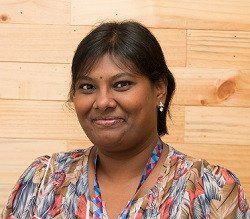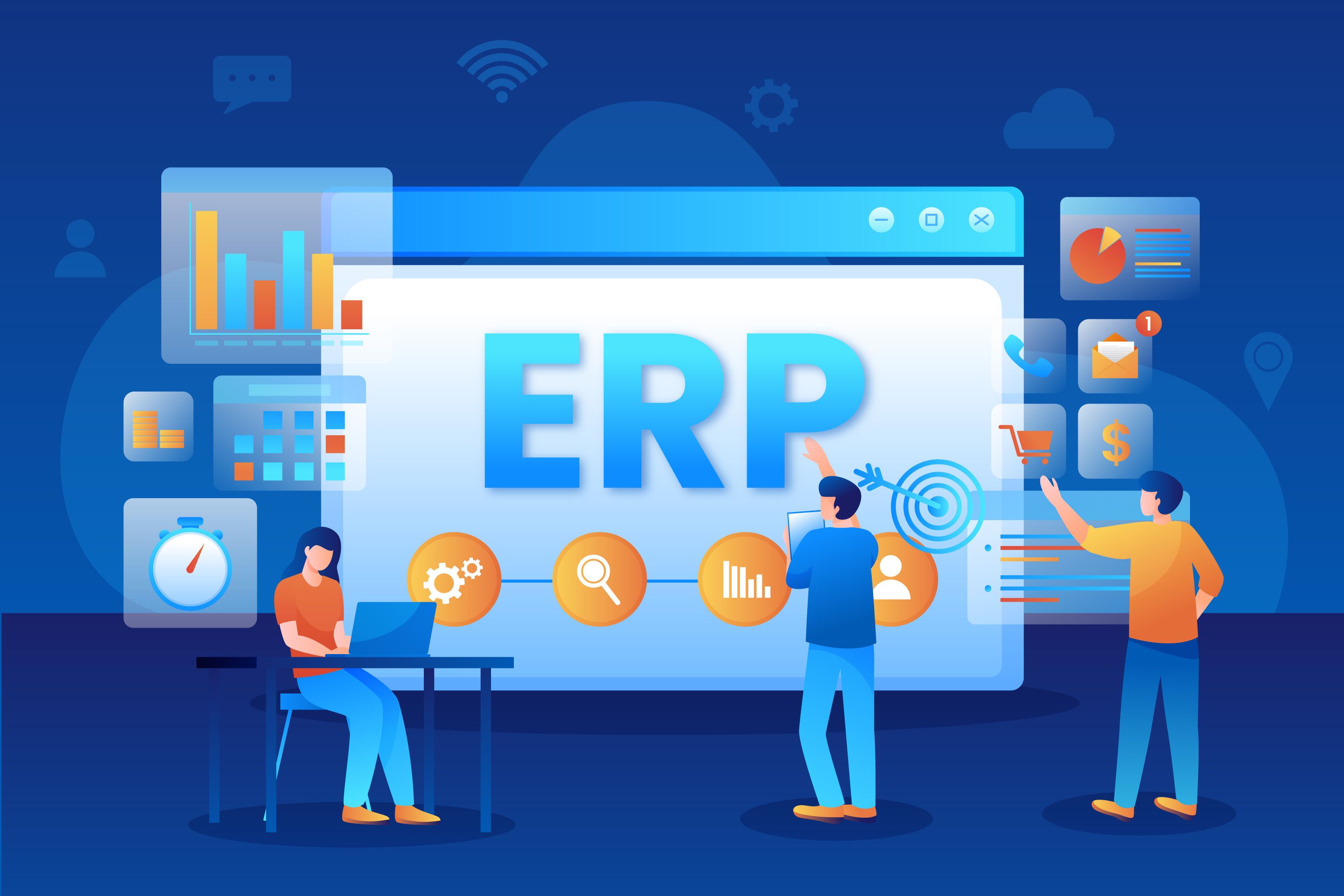How Is HRDF Reskilling The Malaysian Workforce?

In today’s fast-paced economy, businesses are unable to plan for the long term simply because the business landscape is VUCA – volatile, uncertain, complex and ambiguous.
Innovation has become the mantra of the day and businesses that fail to innovate can certainly prepare for an involuntary early retirement. For industries to stay relevant and feature among high-income economic drivers, they need to constantly step up their game.
Enter the Human Resource Development Fund (HRDF).
This is an organisation that constantly invests in various upskilling and capacity-building programmes for all sectors, particularly the small-and-medium enterprises (SMEs) nationwide.
Holding true to its vision of becoming the chief human capital development authority in the country, HRDF provides human resource development (HRD) solutions via funding, assessments, skills enhancement trainings, education and promotional programmes.
Related post: 10 HRDF Financial Schemes And 4 Initiatives You Probably Didn’t Know Of
The organisation works hand in hand with the government to propel the implementation of HRD initiatives such as those formulated under the 11th Malaysia Plan last year. These initiatives are:
- Improving the efficiency of the labour market to accelerate economic growth;
- Transforming technical and vocational education to meet industry demands;
- Strengthening lifelong learning for skills enhancement;
- Improving the quality of the education system for better student outcomes and institutional excellence.
“HRDF’s dynamic new mandate is to ensure the creation and growth of quality local human capital through efficient high-skilled training certification programmes – addressing the initiative to strengthen lifelong learning for skills enhancement – that would contribute to a 35% skilled Malaysian workforce and the creation of 1.5 million jobs by the year 2020,” says HRDF chief executive officer Datuk CM Vignaesvaran Jeyandran.
According to Vignaesvaran, there are currently 17,585 employers from the manufacturing, services, mining and quarrying sectors who are registered with HRDF and almost two million employees are reaping the benefits from HRDF’s training and development programmes.
The numbers are expected to increase soon when the expansion of the Human Resources Development Act 2001 (Akta Pembangunan Sumber Manusia 2001) comes into effect on April 1.
When the act is in place, the number of Malaysians eligible for training under HRDF is expected to increase from the current 1.77 million to 2.8 million in the next three years.
This will also transform the perception that the agency only works as a funds provider for various HR initiatives – a role entrusted to them when they were first established under the Human Resources Ministry in 1993.
“Our Prime Minister Datuk Seri Najib Tun Razak, in the 2016 budget, mandated HRDF to allocate 30% of its consolidated training funds towards reskilling and upskilling programmes that are designed to enhance the quality of Malaysian human capital by improvising local labour productivity and creating more job opportunities that require highly skilled workers,” explains Vignaesvaran.
HRDF is now poised to play a larger and more inclusive role in moving Malaysia up in rank on the Global Competitiveness Index.

HRDF CEO Datuk CM Vignaesvaran Jeyandran. Pic courtesy of HRDF
Bracing the nation for IR4
Today, HRDF is a one-stop centre that provides all its registered employers – of which 81% are SMEs – with HRD solutions, including need-based competency training, while addressing national (and global) HR-related issues in a sustainable manner.
For instance, a critical workforce issue that HRDF is now preparing for revolves around the Industrial Revolution 4.0 (IR4) – a concept that addresses a future in which industrial operations are fully-automated, creating a situation with reduced, or zero-dependency on hard labour.
To achieve this revolution of “smart factories”, HRDF is currently providing support in the form of training and funding to the Department of Skills Development and agencies that lead the development of high-impact human capital initiatives in Johor, Perak, Selangor, Sabah and Sarawak.
As IR4 makes its way to Asian shores, the Malaysian workforce needs to be prepared to have a skilled workforce of between 35% and 40% in order to attain developed economy status in 2020. Currently 28% of the nearly 15 million working population are considered skilled workers.
IR4 is just one of the few big initiatives that HRDF will be focusing on to create a more globally competitive labour force. Other strategic initiatives include its Big Data programme and the MyFuture programme which will further benefit SMEs in Malaysia.
However, HRDF also finds that companies in Malaysia are not fully ready to embrace such changes, as training is limited to respective job scopes. Training seldom helps local companies prepare for future job revolutions, such as the IR4, or something as immediate and straightforward as managing the expectations of the new generation (millennials) at work.
This has become the mission for HRDF, as it works towards changing this mentality and preparing local businesses for waves of change that are already hitting our shores.
“The biggest challenge is changing the mentality of local HR practitioners. For example, the idea of the hiring and firing process must change. With the current workforce that is dominated by Gen-Y and Gen-X, it is no longer relevant to discuss or debate issues concerning tardiness, misuse of leave and so on. These topics should be a discussion of the past, and it is now time to see beyond the problem and find an integrated solution,” explains Vignaesvaran.
Collaboration is key
As far as HRDF is concerned, the private sector has a huge role to play in transforming the industry as a whole.
“The Government will do its part through the various agencies. At HRDF for instance, we have a Sectorial Training Committee that seeks cooperation from private sectors, industry leaders and HR Personnel to give input on industrial and training requirements,” says Vignaesvaran.
“It is important for both the private and public sectors in the country to acknowledge that skills development of our most valuable and sustainable resources – Malaysian employees – are strategic and non-negotiable.”
He adds that it is high time for all sectors to join forces and expertise to find the right solutions to reskill, upskill and multi-skill the local workforce so that they are well prepared to face and adapt to changes. This also contributes to their own growth as well as that of the economy, and simultaneously makes way for the emergence of great leaders and successors.

From right: HRDF chief executive Datuk CM Vignaesvaran Jeyandran, Human Resources Minister Datuk Seri Richard Riot Anak Jaem, deputy Human Resources Minister Datuk Seri Ismail Abdul Muttalib and HRDF’s Special Purpose Vehicle chief Muhammad Ghazali Abdul Aziz officiating HRDF’s Human Capital Strategic Initiatives. Pic courtesy of HRDF
Shaping leaders
Creating leaders who will power up their respective industries and propel them forward is no small task. The HRDF shapes leaders by addressing industry shortcomings through training and learning programmes – fully or partially funded – that are recognised globally.
The HRDF Sectorial Training Committees assesses industry needs and matches them to the right certification programmes to address existing and other “predicted” industrial issues like skills shortage, talent hiring, retention and management, change management and moving skilled workers up the ladder by multi-skilling them.
“The Government’s move to fund reskilling and upskilling programmes will encourage employers to train their employees through certification programmes that are recognised by professional bodies. It will also improve the productivity of current and future HRDF-registered employers as they are encouraged to enhance the knowledge and skill sets of their employees.
“It is our local talent who will provide us with strong platform to sustain the rapid growth of the economy and enhance our global competitiveness,” adds Vignaesvaran.
Strategic initiatives
Earlier this week, HRDF launched four strategic initiatives aimed at contributing towards the national agenda of achieving a 35% skilled Malaysian workforce by 2020.
The event, graced by Human Resources Minister Datuk Seri Richard Riot Anak Jaem, saw the launch of four initiatives – the 1Malaysia Outplacement Centre (1MOC), Train and Replace Programme (T&R), the Graduates Enhancement Programme for Employability (GENERAtE) and Rural Accelerated Industrial Skills for Employment (RAISE) – to address pressing issues such as unemployment, dependency on foreign labour, management of the future workforce, and increasing employment opportunities for those in rural areas.
Commenting on the RAISE programme, Richard said: “This initiative not only increases the employability of rural youths but also helps employers obtain trained local workers.
This is in line with the 11th Malaysia Plan to enhance inclusiveness towards an equitable society that ensures equal opportunity for Malaysians from all walks of life.”
These initiatives will be funded via the 30% HRDF Pool Fund, government allocation and private partnerships, and will run on a continuous basis based on industry requirements.
The programmes will collectively serve several key objectives including reducing the nation’s unemployment rate and related social ills; increasing local household income and national income per capita; and producing skilled Malaysian workers for domestic businesses.
Setting the stage for millennials

Today’s workforce is by far the most diverse, with three active generations – baby boomers, Gen-X and Gen-Y or millennials – swimming within the same talent pool.
Businesses worldwide are reinventing their work processes, policies and workspaces to cater to the millennials as they are the future of the workforce. Companies would have realised (or are bound to realise) the dire need to attract, train and retain this generation – a challenge that grips all industries currently.
For HRDF, the best way to attract and retain the Gen-Y is by implementing a flexible feedback system. As the recent Millennial Branding and PwC’s Future of Work Millennial Survey shows, this generation loves constant feedback from their bosses.
The study reveals that 80% of millennials enjoy receiving feedback from their managers while 35% are on the lookout for training and development opportunities at work as means to upgrade themselves. For most Gen-Y, their work too should give them a sense of purpose; 91% will most likely leave the job within the first three years.
Vignaesvaran says connecting with the ‘connected’ generation – most of whom are accustomed to instant answers and real-time replies online – should be facilitated through constant engagement and feedback that help them learn and grow along the way.
“If you wish to attract and retain the Gen-Ys, implementing a feedback process with the help of performance evaluation tools should be a burning priority. Once set up, the next step is to communicate it to them even before they set foot in your company,” advises Vignaesvaran.
Retaining future talent is not an easy task, but HRDF believes that millennials will stay on when they get what they need, such as growth opportunities and a collaborative working environment.
Customising training and development opportunities may help do the job and prepare employers to welcome the subsequent generations – who are likely to once again revolutionise the business and consumerism landscape – into the workforce.
For more information, visit www.hrdf.com.my
Business
Tags: Companies, Growth, Business Model






